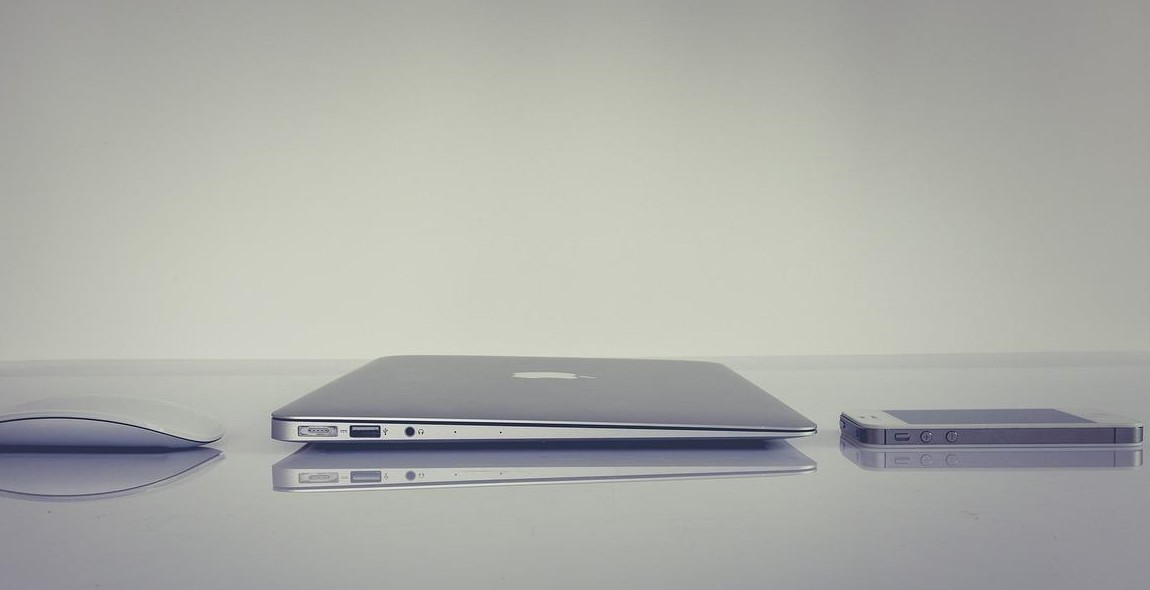How to Create a Productive Home Office for Weekend Work: Setting Up Your Workspace
Working from home has become a popular trend, and with good reason. It offers flexibility, convenience, and the ability to work from anywhere. However, working from home can also be a challenge, especially when it comes to productivity. Creating a productive home office is essential to ensure you get your work done efficiently and effectively.
The Importance of a Productive Home Office
Having a productive workspace at home can help you stay focused and motivated. It can also improve your work-life balance by allowing you to separate your work from your personal life. A well-designed home office can help you be more productive, reduce stress, and increase your overall satisfaction with your work.
Setting Up Your Workspace
Setting up a home office requires careful planning and consideration. You need to create a space that is comfortable, functional, and conducive to work. This may involve choosing the right furniture, lighting, and equipment. It may also mean setting boundaries with family members or roommates and establishing a routine that helps you stay on track.
- Choose a quiet, well-lit space
- Invest in a comfortable chair and desk
- Ensure you have adequate storage space
- Set up your computer and other equipment
- Establish boundaries with family members or roommates
- Develop a routine that works for you
By following these tips, you can create a productive home office that will help you stay focused and motivated, even on weekends.

Assessing Your Needs
Before setting up your home office for weekend work, it is important to assess your specific work requirements and the available space in your home. This will help you create a productive and comfortable workspace that meets your needs.
Evaluate Your Work Requirements
Consider the type of work you will be doing in your home office. Will you need a large desk for your computer and other equipment? Do you need a quiet space for phone calls or video conferences? Will you need storage space for files and documents?
It is also important to think about your work schedule and how much time you will be spending in your home office on the weekends. This will help you determine the level of comfort you require in your workspace, such as ergonomic furniture and adequate lighting.
Assess Your Space
Take a close look at the available space in your home and determine the best area for your home office. Consider factors such as natural light, noise levels, and privacy.
You may need to make some adjustments to the space, such as adding a desk or shelving, to create an optimal workspace. It is also important to ensure that the space is properly ventilated and has access to power outlets and internet connectivity.
By carefully assessing your needs and available space, you can create a home office that is tailored to your specific work requirements and ensures maximum productivity.

Choosing Your Workspace
When it comes to setting up a productive home office, selecting the right workspace is crucial. Here are some tips for choosing the ideal room, desk, and chair for your weekend work:
Selecting the Ideal Room
The ideal room for your home office should be quiet, well-lit, and have enough space for you to work comfortably. If possible, choose a room with a door that you can close to minimize distractions. Consider the location of power outlets and internet access as well.
Choosing the Best Desk
Your desk is the centerpiece of your home office. It should be large enough to accommodate your computer, paperwork, and any other necessary equipment. Look for a desk that is sturdy and adjustable in height to ensure proper ergonomics. A standing desk is a great option for those who want to avoid sitting for extended periods.
Choosing the Best Chair
Your chair is just as important as your desk in terms of ergonomics. Choose a chair that provides proper lumbar support, adjustable armrests, and adjustable height. A comfortable chair will keep you focused and reduce the risk of back pain or other discomforts.
| Workspace Essentials | Considerations |
|---|---|
| Quiet | – Choose a room with a door you can close |
| Well-lit | – Consider natural light and artificial lighting options |
| Spacious | – Ensure enough space for your desk and equipment |
| Sturdy desk | – Consider size, adjustability, and standing option |
| Comfortable chair | – Look for lumbar support, adjustability, and padding |

Setting Up Your Equipment
One of the most important aspects of setting up a productive home office is investing in reliable equipment. When it comes to computers, it’s essential to choose a device that can handle your workload and is equipped with the necessary software programs.
Invest in a Reliable Computer and Peripherals
When choosing a computer, consider factors such as processing speed, memory, and storage capacity. You’ll also want to invest in a high-quality monitor, keyboard, and mouse to ensure comfortable and efficient use.
For peripherals, consider purchasing a printer, scanner, and speaker system if needed. These tools will help you complete your work more efficiently and effectively.
Organize Your Cables and Power Sources
One of the most frustrating things about a cluttered workspace is dealing with tangled cables and power sources. Take the time to organize your cables and power sources to avoid any unnecessary stress or frustration.
Use cable ties, clips, and cord organizers to keep your cables neat and tidy. You can also invest in a power strip or surge protector to keep your devices protected and prevent any damage from power surges.
By investing in reliable equipment and organizing your cables and power sources, you’ll create a productive and efficient home office that will help you get your weekend work done with ease.

Optimizing Your Environment
Creating a productive home office requires more than just setting up a desk and chair. Your environment plays a key role in your ability to focus and stay productive. Here are some tips for optimizing your environment:
Lighting and Temperature Control
Lighting and temperature are two key factors that can affect your productivity. Natural lighting is the best option, so try to set up your workspace near a window. If that’s not possible, invest in a good desk lamp that provides bright, white light. Avoid fluorescent lighting, as it can cause eye strain and headaches.
Temperature is also important. Keep your workspace at a comfortable temperature, around 68-72 degrees Fahrenheit. If you tend to get cold easily, invest in a space heater. If you tend to get hot, use a fan or open a window to allow for fresh air circulation.
Reduce Noise and Distractions
Noise and distractions can derail your productivity quickly. Consider using noise-cancelling headphones or earplugs to block out external noise. If you have a lot of background noise in your home, consider using a white noise machine to create a more peaceful environment.
Additionally, try to eliminate any distractions in your workspace. Keep your phone on silent and out of sight, and avoid opening unnecessary tabs or applications on your computer. A cluttered workspace can also be distracting, so take a few minutes each day to tidy up your desk and keep it organized.
| Lighting and Temperature Control | Reduce Noise and Distractions |
|---|---|
| Natural lighting or a good desk lamp | Noise-cancelling headphones or earplugs |
| Comfortable temperature, around 68-72 degrees Fahrenheit | Use a white noise machine |
| Avoid fluorescent lighting | Keep phone on silent and out of sight |
| Invest in a space heater or fan if necessary | Avoid opening unnecessary tabs or applications |

Establishing a Routine
One of the most important aspects of creating a productive home office is establishing a routine. Without a routine, it’s easy to get distracted and lose focus, which can lead to missed deadlines and unfinished projects.
Create a Schedule
Start by creating a schedule that works for you. This could mean setting specific work hours, or it could mean creating a daily to-do list. Whatever your approach, the key is to stick to it as much as possible.
- Use a planner or digital calendar to keep track of your schedule
- Prioritize your tasks and focus on the most important ones first
- Take breaks when needed, but be sure to get back to work on time
Set Boundaries with Family and Friends
When working from home, it’s important to set boundaries with family and friends. Let them know that you are working and ask them to respect your schedule.
- Set specific “do not disturb” times when you need to focus
- Use a sign or signal to let others know when you are working
- Communicate your schedule and boundaries clearly and consistently
By establishing a routine and setting boundaries, you can create a productive home office that allows you to get your work done efficiently and effectively.
Staying Motivated and Productive
Working from home can be challenging, especially when it comes to staying motivated and productive. Here are some tips to help you stay on track:
Take Breaks and Move Your Body
It’s important to take breaks throughout the day to avoid burnout. Use these breaks to move your body and stretch your muscles. You can take a walk outside, do some yoga, or even just walk around your house. This will help you stay energized and focused.
Stay Focused with Time Management Techniques
Time management is crucial when it comes to staying productive. One technique is to break your workday into smaller chunks of time, such as 25-minute intervals with a 5-minute break in between. This is known as the Pomodoro Technique. Another technique is to prioritize your tasks and focus on the most important ones first.
- Take breaks throughout the day to avoid burnout
- Move your body and stretch your muscles during breaks
- Use time management techniques like the Pomodoro Technique
- Focus on the most important tasks first
By implementing these tips, you can stay motivated and productive while working from home.

Conclusion
Creating a productive home office for weekend work is essential for anyone who wants to get things done efficiently and effectively. With the right setup, you can accomplish more in less time and enjoy the benefits of a flexible work schedule.
Start by choosing a dedicated workspace that is comfortable, quiet, and well-lit. Invest in a good quality desk and chair that will support your posture and prevent discomfort. Organize your space with storage solutions that keep everything you need within reach and eliminate clutter.
Set up your technology with a reliable internet connection, a comfortable keyboard and mouse, and a monitor that will reduce eye strain. Use headphones or a headset to reduce distractions and stay focused on your work.
Finally, establish a routine that works for you. Create a schedule that allows you to balance work and personal life, and stick to it as much as possible. Take breaks, get up and move around, and stay hydrated to keep your energy levels up throughout the day.
By following these tips, you can create a productive home office that will help you achieve your goals and enjoy your weekends. Remember, a well-designed workspace is the key to success!
